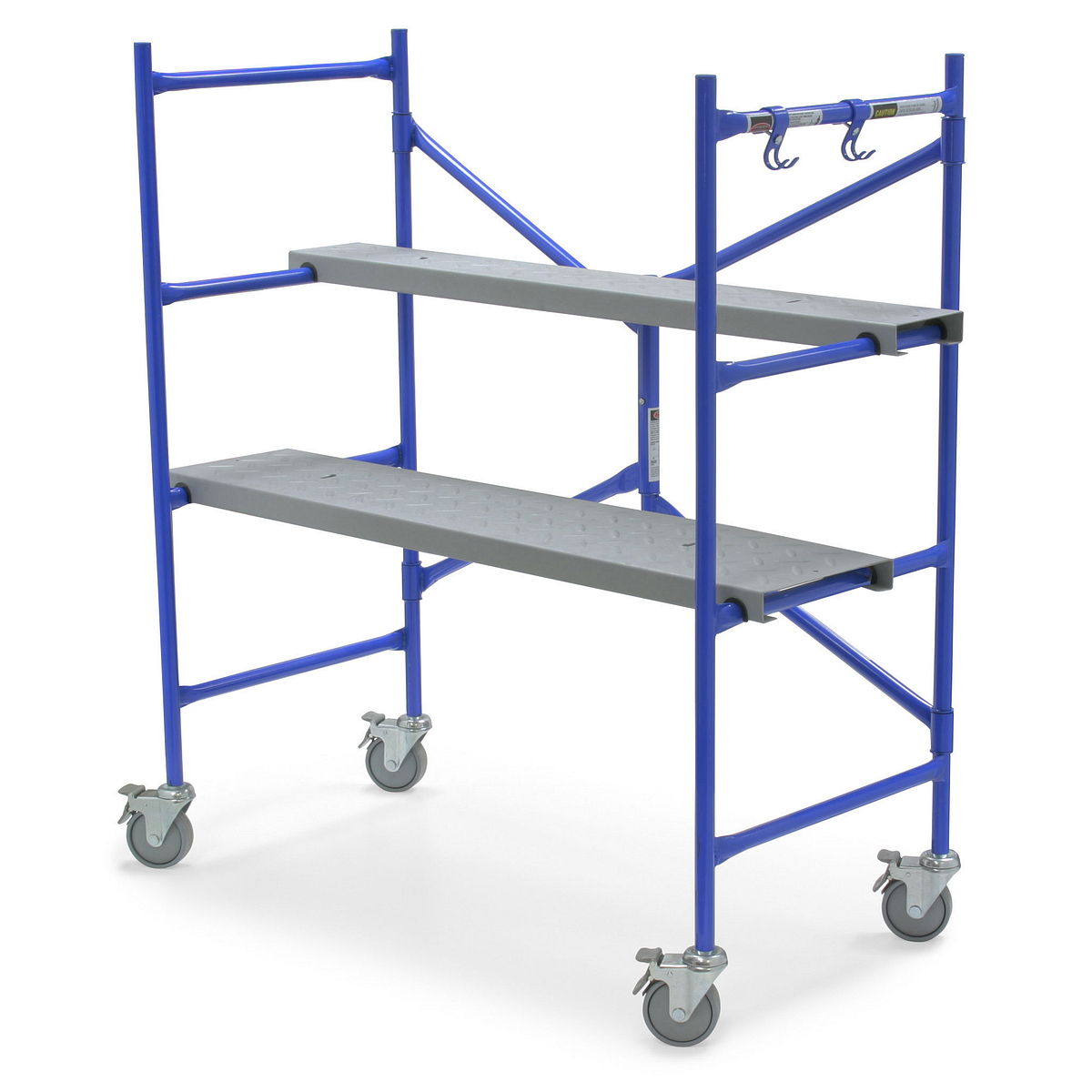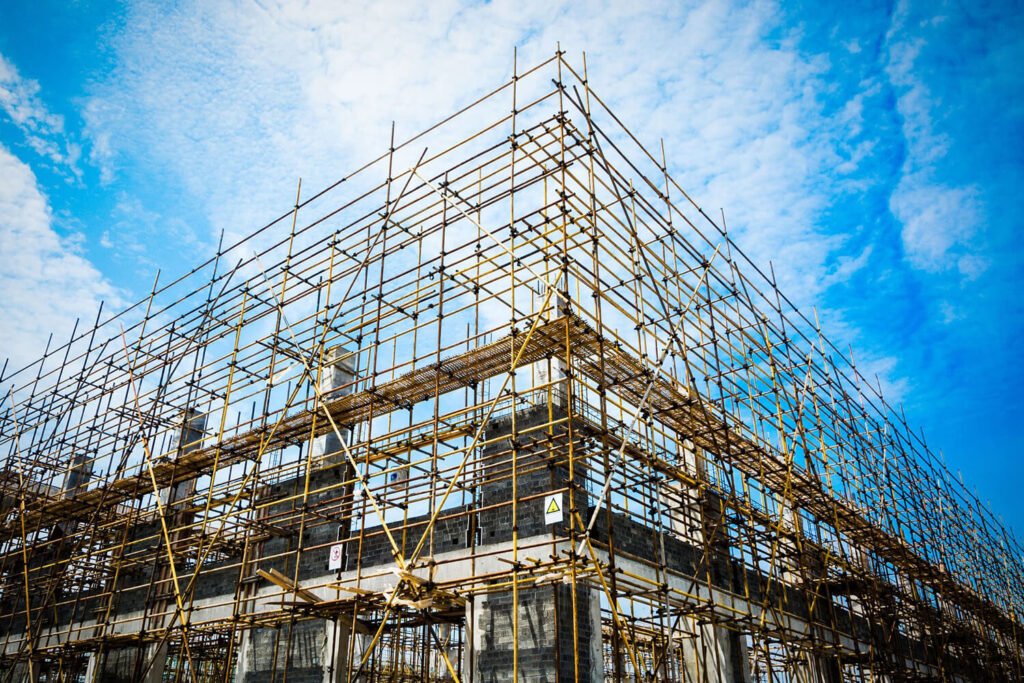A Comprehensive Overview to the Necessary Functions of Scaffolding in Modern Construction
The landscape of modern construction significantly depends on effective scaffolding systems that focus on effectiveness, safety, and technology. As tasks grow in intricacy, understanding the necessary functions of scaffolding becomes important for ensuring worker safety and maximizing project timelines. This overview discovers various types of scaffolding, highlights vital safety functions, and checks out material advancements that add to efficiency and sustainability. The effects of these elements prolong much past plain construction methods, motivating a closer look at how they influence overall job success and employee well-being.
Kinds Of Scaffolding
Although scaffolding systems can differ extensively in layout and application, they normally come under a number of unique categories that accommodate various building and construction needs - Scaffolding. One of the most typical types consist of sustained scaffolding, put on hold scaffolding, and rolling scaffolding
Supported scaffolding contains platforms sustained by a structure of poles, which offer a secure and raised working surface area. This type is usually used for jobs that need significant altitude, such as bricklaying or exterior painting.
Suspended scaffolding, on the other hand, is made use of for jobs requiring access to high altitudes, such as cleansing or fixing structure exteriors. This system hangs from one more framework or a rooftop, enabling employees to reduced or elevate the platform as required.
Rolling scaffolding functions wheels that permit for easy mobility throughout a work website. It is particularly useful for jobs that require regular relocation, such as indoor work in huge rooms.
Each sort of scaffolding is developed with particular applications in mind, ensuring that construction jobs can be brought out successfully and successfully. Understanding these categories is vital for picking the ideal scaffolding system to satisfy both task needs and website problems.
Trick Safety And Security Functions
Security is vital in scaffolding systems, as the prospective dangers connected with operating at heights can lead to serious accidents if not correctly handled. Key safety features are necessary to ensure the well-being of employees and the honesty of the building website.
Primarily, guardrails are crucial. These obstacles supply a physical secure against falls, significantly reducing the risk of significant injuries. Additionally, toe boards are commonly utilized to stop devices and products from dropping off the scaffold, protecting workers listed below.
One more important part is using non-slip surfaces on platforms. This attribute improves grip, especially in damaging weather, therefore minimizing the likelihood of drops and slips. Additionally, accessibility ladders must be securely placed to help with secure entrance and exit from the scaffold.
Regular evaluations and maintenance of scaffolding systems are likewise crucial. These examinations guarantee that all parts remain in great problem and functioning properly, resolving any kind of wear or damage without delay.
Lastly, proper training for all employees involved in scaffolding procedures is important to make sure that they recognize safety procedures and can recognize potential risks. Scaffolding. Jointly, these attributes create a safer working atmosphere and dramatically mitigate risks related to scaffolding
Material Developments
Improvements in material scientific research have substantially affected the scaffolding sector, boosting both safety and security and efficiency in contemporary building. The intro of high-strength steel and light weight aluminum alloys has actually revolutionized standard scaffolding systems. These products are not just lighter, making them much easier to transport and assemble, yet likewise supply remarkable load-bearing capacities. This causes scaffolding frameworks that can sustain higher weights while lessening the danger of collapse.
Additionally, ingenious composite materials, such as fiberglass-reinforced plastics, have actually become practical options. These materials are immune to corrosion and environmental destruction, thus extending the lifespan of scaffolding systems, particularly in harsh climate condition. Making use of such materials adds to reduce upkeep expenses and guarantees consistent efficiency with time.


Layout Considerations
Thinking about the complexities of modern building and construction jobs, effective scaffolding design is paramount to ensuring both capability and security. Design considerations should incorporate different elements, consisting of lots capability, height, and the details requirements of the building and construction website. Each job presents one-of-a-kind difficulties, requiring a versatile approach to scaffolding systems that can adjust to varying problems.
Structural integrity is important; as a result, designers need to determine the tons that the scaffolding will certainly support, consisting of workers, products, and devices. The choice of products plays an important duty in guaranteeing the scaffolding can endure these loads while continuing to be resilient and light-weight. Furthermore, the design needs to permit easy accessibility and egress, helping with the smooth activity of products and personnel.
Security attributes, such as guardrails and non-slip surface areas, need to be integrated to lessen threats of crashes. The design has to consider the surrounding environment, including prospective risks and nearby frameworks. By attending to these design considerations, building companies can improve the performance of scaffolding systems and advertise a more secure working environment, ultimately adding to the overall success of the project.
Maintenance and Inspections
The effectiveness of scaffolding systems extends beyond initial design and implementation; ongoing maintenance and normal inspections are vital to ensuring their proceeded efficiency and security throughout the duration of a project. Regular inspections should be performed by qualified personnel to recognize any type of indications of wear, damage, or instability that could endanger the stability of the scaffolding.
Maintenance protocols should consist of regular checks of structural components, such as frameworks, fittings, and slabs, making sure that all elements continue to be free and safe and secure from rust or other damage. In addition, the capability of safety and security functions, such as guardrails and toe boards, must be assessed to ensure conformity with safety guidelines.
Documentation of all inspections and upkeep activities is critical for responsibility and governing compliance. An organized technique to record-keeping not only help in tracking the problem of the scaffolding however additionally offers essential evidence in case of an event.
Inevitably, establishing a detailed maintenance and inspection timetable will considerably lower the danger of mishaps and enhance the overall safety and security of the construction site. By focusing on these practices, building supervisors can safeguard workers and maintain the task's stability.

Final Thought
To conclude, the vital functions of scaffolding in modern construction encompass an array of vital aspects, including diverse kinds, crucial security systems, material developments, and thoughtful design factors to consider. Stressing security through guardrails and non-slip surfaces, alongside innovations in products like high-strength steel, enhances both efficiency and sustainability. Moreover, routine maintenance and examinations are essential for making sure structural honesty and security on building and construction sites, ultimately promoting effective project implementation and advertising the well-being of employees.
The landscape of modern-day building significantly depends on reliable scaffolding systems that prioritize effectiveness, safety and security, and development.Developments in material scientific research have actually significantly influenced scaffold services midlands ltd the scaffolding sector, boosting both safety and effectiveness in contemporary building and construction. Overall, these material technologies not just boost the performance and safety of scaffolding systems however additionally line up with the sector's press towards sustainability, as numerous modern products are made to be more environmentally friendly.
Thinking about the intricacies of modern building jobs, efficient scaffolding style is vital to making sure both functionality and safety.In conclusion, the important features of scaffolding in modern construction encompass an array of important components, consisting of diverse types, key safety mechanisms, product technologies, and thoughtful layout factors to consider.
Comments on “Affordable Domestic Scaffolding for Every Home Renovation Project”